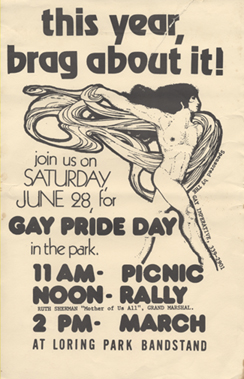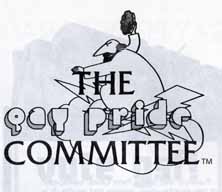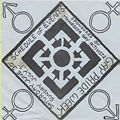Difference between revisions of "Twin Cities Pride Festival"
| Line 45: | Line 45: | ||
Image:Svc_pguide3.jpg|<small>'''1975 Pride Guide. Ruth Sherman acts as Grand Marshal of the [[Twin Cities Pride Parade]]. Approximately 500 attend.'''</small> | Image:Svc_pguide3.jpg|<small>'''1975 Pride Guide. Ruth Sherman acts as Grand Marshal of the [[Twin Cities Pride Parade]]. Approximately 500 attend.'''</small> | ||
Image:Svc_pguide4.jpg|'''<small>1977 Pride Guide. The first booths and vendors set up in [[Loring Park]], and the parade changes to Hennepin Avenue.</small>''' | Image:Svc_pguide4.jpg|'''<small>1977 Pride Guide. The first booths and vendors set up in [[Loring Park]], and the parade changes to Hennepin Avenue.</small>''' | ||
| − | Image:Svc_pguide5.jpg|1978 | + | Image:Svc_pguide5.jpg|<small>1978 Pride Guide from the Minneapolis protest. Bisexual activists wanted inclusion but were ignored by the committee.</small> |
| − | Image:Svc_pguide6.jpg|1978 | + | Image:Svc_pguide6.jpg|<small>1978 Pride Guide from the St. Paul picnic, which suffered from the recent repeal of equal rights and terrible weather.</small> |
| − | Image:Svc_pguide7.jpg|1979 Pride Guide | + | Image:Svc_pguide7.jpg|<small>1979 Pride Guide. The rally, picnic, and parade become recognizable as a cohesive festival.</small> |
| − | Image:Svc_pguide8.jpg|1980 Pride Guide | + | Image:Svc_pguide8.jpg|<small>1980 Pride Guide. More than 2,000 attend.</small> |
| − | Image:Svc_pguide9.jpg|1981 Pride Guide | + | Image:Svc_pguide9.jpg|<small>1981 Pride Guide. "Fresh Fruit" airs the first public broadcast of Pride events through KFAI Radio.</small> |
| − | Image:Svc_pguide10.jpg|1982 Pride Guide | + | Image:Svc_pguide10.jpg|<small>1982 Pride Guide. The Pride Committee removes "Lesbian" from its title, resulting in a [[Loring Park]] "Gay Pride" and a [[Powderhorn Park]] "Lesbian Pride."</small> |
| − | Image:Svc_pguide11.jpg|1983 Pride Guide | + | Image:Svc_pguide11.jpg|<small>1983 Pride Guide. The City of Minneapolis permits street closures for the parade and block party for the first time.</small> |
| − | Image:Svc_pguide12.jpg|1984 Pride Guide | + | Image:Svc_pguide12.jpg|<small>1984 Pride Guide. More than 5,000 attend the festival, and a history exhibit in St. Paul's landmark center commemorates the 15th anniversary of the Stonewall Riots.</small> |
| − | Image:Svc_pguide13.jpg|1985 Pride Guide | + | Image:Svc_pguide13.jpg|<small>1985 Pride Guide. The Pride Committee attempts to gate the festival and charge admission. Amid the AIDS crisis, the community rejected this decision. Attendance was low.</small> |
| − | Image:Svc_pguide14.jpg|1986 Pride Guide | + | Image:Svc_pguide14.jpg|<small>1986 Pride Guide. The [[Minnesota AIDS Project (MAP)]] organizes the event after the Pride Committee collapses financially.</small> |
| − | Image:Svc_pguide15.jpg|1987 Pride Guide | + | Image:Svc_pguide15.jpg|<small>1987 Pride Guide. The new Pride Committee hosts the event at [[Powderhorn Park]], and extends the parade route to 2 1/2 miles along 32nd Street.</small> |
| − | Image:Svc_pguide16.jpg|1988 Pride Guide | + | Image:Svc_pguide16.jpg|<small>1988 Pride Guide. 7,500 attend the festival, and the Pride Committee shortens the parade route.</small> |
| − | Image:Svc_pguide17.jpg|1989 Pride Guide | + | Image:Svc_pguide17.jpg|<small>1989 Pride Guide. The Pride Committee breaks from the G.L.C.A.C. (later [[OutFront Minnesota]]) and becomes its own nonprofit group. Five Grand Marshals are selected to commemorate the 20th anniversary of the Stonewall Riots.</small> |
| − | Image:Svc_pguide90.jpg|1990 Pride Guide | + | Image:Svc_pguide90.jpg|<small>1990 Pride Guide. The [[Twin Cities Pride Festival]] expands to a week-long event, and over 15,000 attend.</small> |
| − | Image:Svc_pguide19.jpg|1991 Pride Guide | + | Image:Svc_pguide19.jpg|1991 Pride Guide. |
Image:Svc_pguide20.jpg|1992 Pride Guide | Image:Svc_pguide20.jpg|1992 Pride Guide | ||
Image:Svc_pguide21.jpg|1993 Pride Guide | Image:Svc_pguide21.jpg|1993 Pride Guide | ||
Revision as of 14:35, 30 March 2010
Loring Park, Minneapolis, MN
 1976 Twin Cities Pride Poster, 1976. Courtesy of the Jean-Nickolaus Tretter Collection. |
The most significant annual event in Minnesota’s LGBT history began in 1972 as a picnic in Loring Park’s northeast corner. Organized by F.R.E.E. at the University of Minnesota and members of Gay House, the state’s first Pride celebration was a simple social gathering with less than 100 attendees. These young people gathered to celebrate the Stonewall Riots in New York City.
|
| The event became a true festival around 1990, following the trend of other Pride celebrations. With attendance numbering in the thousands and scores of vendors, the Pride Committee requested vendor applications and began to arrange booths around Loring Lake.
Music venues also expanded and required multiple stages by the mid-90s. The Pride Committee started accepting corporate sponsorship money in the late 1990s to accommodate this exponentially-increasing patronage. As 2000 came and went, attendance numbered more than 100,000 people.(3) |
'The Twin Cities Pride Committee Logo, c.1977. The image is a reference to the once-popular act of pieing (see:the Cathedral of St. Paul) Courtesy of the Jean-Nickolaus Tretter Collection.'
|
The 2000s were a decade of expansion, outreach, and professional development. Vendors stalls and non-profit booths—numbering in the hundreds—spanned out from the lake along park paths. The Pride Committee expanded events throughout the calendar year and introduced a new “family area” and a space for commitment ceremonies.(4) In its 38th year, Pride expects an attendance of 400,000—more than the population of the City of Minneapolis, making it the third-largest pride event in the nation.
Pride Guides
1975 Pride Guide. Ruth Sherman acts as Grand Marshal of the Twin Cities Pride Parade. Approximately 500 attend.
1977 Pride Guide. The first booths and vendors set up in Loring Park, and the parade changes to Hennepin Avenue.
1982 Pride Guide. The Pride Committee removes "Lesbian" from its title, resulting in a Loring Park "Gay Pride" and a Powderhorn Park "Lesbian Pride."
1986 Pride Guide. The Minnesota AIDS Project (MAP) organizes the event after the Pride Committee collapses financially.
1987 Pride Guide. The new Pride Committee hosts the event at Powderhorn Park, and extends the parade route to 2 1/2 miles along 32nd Street.
1989 Pride Guide. The Pride Committee breaks from the G.L.C.A.C. (later OutFront Minnesota) and becomes its own nonprofit group. Five Grand Marshals are selected to commemorate the 20th anniversary of the Stonewall Riots.
1990 Pride Guide. The Twin Cities Pride Festival expands to a week-long event, and over 15,000 attend.
(1) Tretter, Jean-Nickolaus, Interview with the author and Jacob Gentz. January, 2009.
(2) Curnoyer, Nancy "Nan." Interview with the author and Jacob Gentz. February, 2009.
(3) Twin Cities Pride Guides, 1991-1998. From the "Twin Cities Pride Collection." Jean-Nickolaus Tretter Collection ing GLBT Studies: University of Minnesota Libraries.
(4) Nienaber, William (Bill). Interview with the author and Jacob Gentz. April, 2009.
Part of Minneapolis/St. Paul, MN: 100 Queer Places in Minnesota History, (1860-1969), (1969-2010)




































